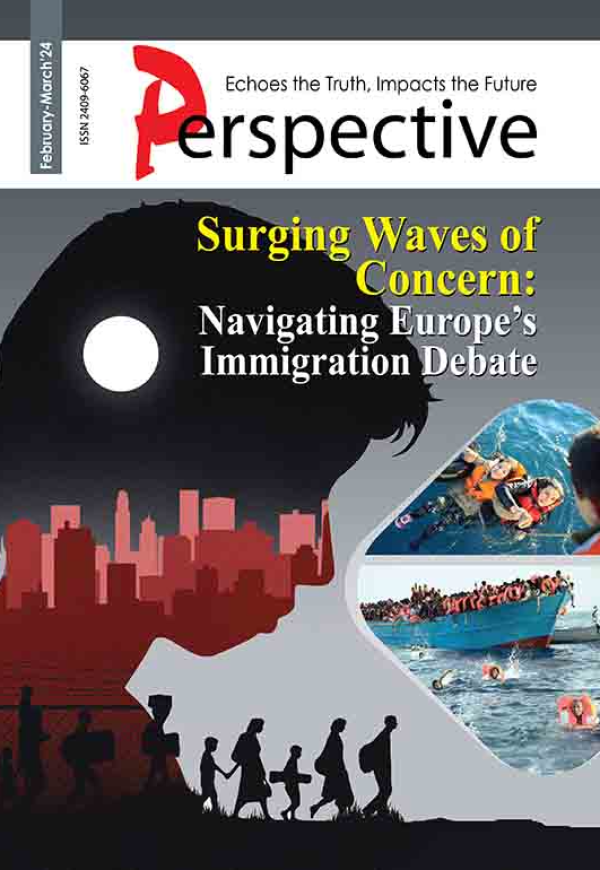Global Pursuit of Knowledge : Unraveling the Surge of Bangladeshi Students Studying Abroad
Global Pursuit of Knowledge : Unraveling the Surge of Bangladeshi Students Studying Abroad
Global Pursuit of Knowledge : Unraveling the Surge of Bangladeshi Students Studying Abroad

Over the past 15 years, the departure of Bangladeshi students pursuing higher education abroad has witnessed a remarkable threefold increase, signaling a profound shift in educational aspirations. While the United States remains the top destination, the United Kingdom, Canada, Malaysia, Germany, and Australia have emerged as preferred choices, reflecting a diverse range of preferences among the student community. The desire for high-quality education, access to global job markets, and the promise of improved living conditions are just a few of the factors supporting this surge. Scholarships and facilities offered by developed countries further fuel this trend, prompting a constant rise in Bangladeshi students enrolling in foreign universities.
The number of students going abroad has tripled in 15 years, despite the university boom.
The number of students going abroad
| Year | Number of Students |
| 2008 | 16, 609 |
| 2013 | 24, 112 |
| 2022 | 49, 151 |
| 2023 | 52, 799 |
Source: The Daily Star
Quality education abroad
Education officials acknowledge the superior quality of education abroad compared to Bangladesh, providing a compelling incentive for students to seek education beyond the nation’s borders. The allure of ancient and esteemed institutions abroad adds an extra layer of appeal for Bangladeshi students.
Challenges faced by Bangladeshi youths
Bangladeshi youths grapple with challenges like limited job opportunities, political uncertainties, and doubts about domestic education quality. Reports from Bangladesh Business News underscore that issues in the local job market, such as restricted career growth opportunities and a competitive landscape, have come to the forefront.
Economic imperatives
The economic factors driving this migration stem from the pursuit of prosperity. Students seek higher salaries and improved living standards, in addition to academic excellence. Remittances play a crucial role in sustaining households and contribute significantly to the national economy, creating a symbiotic relationship between the Bangladeshi diaspora—those living abroad—and Bangladesh. Case studies highlight individuals seeking global opportunities due to restricted career growth locally. Exposure to global business practices motivates these individuals, contributing to a diaspora that actively participates in Bangladesh’s economic development.
Political and social dynamics
Political instability significantly influences the decisions of Bangladeshi youths, with concerns about governance and a desire for a more open society actively shaping their migration choices. For instance, the recent unrest during political movements, such as taking back the caretaker government, and the controversies surrounding the 12th National Election have contributed to this trend. Societal factors, such as the allure of experiencing different cultures, also play a pivotal role in the migration trend. The quest for a cosmopolitan lifestyle becomes a compelling reason to explore opportunities beyond national borders.
Challenges in the local job market
Reports from Bangladesh Business News emphasize limitations in the local job market, including restricted career growth and a competitive landscape. Ambitious individuals, aiming for exposure to international business practices, are driven to explore opportunities overseas.
Corruption and lack of job opportunities
Corruption’s corrosive role propels Bangladeshi youth abroad, driven by the lack of transparency and equal opportunities in the domestic job market. Examining specific case studies reveals the tangible impact of corruption on job opportunities, underscoring the need for systemic changes to retain local talent.
Quality of life and happiness abroad
Beyond economic factors, the pursuit of happiness emerges as a powerful driver. Bangladeshi students seek a more fulfilling life abroad, where personal aspirations intertwine with the global pursuit of contentment. Personal stories and interviews provide nuanced perspectives on the challenges and triumphs of navigating life in a foreign land.
Seeking better job opportunities abroad
Features in Dhaka Tribune, including interviews and articles, shed light on the frustration among youths facing a scarcity of suitable employment options domestically. The decision to leave in search of better job opportunities abroad becomes a pragmatic response to a challenging job market.
Poor research facilities in Bangladesh
Challenges in the research sector, including limited resources and outdated infrastructure, contribute to the migration trend. Inadequate facilities impact the professional aspirations of young researchers, limiting their potential for groundbreaking contributions. Detailed exploration of these challenges, along with data on the state of research facilities, unveils another layer of the complex migration narrative.
Academic opportunities and cultural exchange
Beyond the pursuit of degrees, the allure of social and cultural exchange has become an integral part of the decision to study abroad. The main drivers behind this migration include the promise of quality education, accessibility to post-education job markets, and improved living conditions. Developed countries, particularly the United States, actively attract Bangladeshi students by offering scholarships and various facilities, contributing to the steady rise in their enrollment.
Challenges and concerns
Despite the growing number of students going abroad, there remain concerns about the quality of education within Bangladesh. Education officials emphasize that the disparity in education quality is a key factor propelling students to seek opportunities elsewhere. To address this, experts advocate raising the standards of domestic higher education institutions and creating more job opportunities for the youth.
Global comparison
While the number of students studying abroad in Bangladesh is on the rise, it still lags behind neighboring countries like India, Pakistan, and Nepal, from India, a total of 5,08,174 students went abroad for higher studies in 2023, and from Nepal, a total of 88,904 students went abroad for higher education in 2023. Educationists acknowledge the positive message sent by students pursuing higher education abroad, but there’s a growing concern about their return rates and the limited opportunities they find upon returning, posing a potential threat to the nation’s future.
Expert opinions and strategies
Professor Dr SM Hafizur Rahman from Dhaka University’s Institute of Education and Research attributes the trend to the continuous backwardness of the country’s institutions. He emphasizes the appeal of opportunities in the USA and highlights the influence of easy access to jobs and better living conditions. Rahman believes that preventing the trend requires a concerted effort to enhance the quality of Bangladesh’s higher education institutions. Omar Farooq, director of the Private University Division at the Bangladesh University Grants Commission (UGC), shares ongoing initiatives to improve the quality of universities. These include instructing vice-chancellors to align syllabi with international curricula, regular monitoring, and collaborative efforts with various supervisory bodies.
Complex dynamics and reasons behind migration
Despite a doubling of universities in the last 15 years, the flow of students leaving persists due to a combination of factors, including the perceived lack of quality in higher education, political uncertainties, and limited employment opportunities within the country.
Diverse academic offerings abroad
Foreign colleges attract Bangladeshi students with a myriad of specialized courses. The broad selection of courses, majors, and focuses abroad allows students to tailor their education to meet unique professional goals. This includes cutting-edge technology, novel business models, and specialized topics such as environmental sustainability.
UNESCO data
According to the latest UNESCO data, a total of 52,799 Bangladeshi students went abroad for higher education in 2023. The United States was the most preferred destination, with 8,524 students, followed by the UK (6,586), Canada (5,835), Malaysia (5,714), Germany (5,046), Australia (4,987), Japan (2,082), India (2,606), the Koreas Republic (1,202), and Saudi Arabia (1,190).
Report analysis
A recent report highlighted the tripling of Bangladeshi students going abroad over the last 15 years, despite the increase in homegrown universities. The central argument points to the perceived lack of quality education at home, compelling those with financial means to seek higher education abroad. The report identifies push factors while discounting certain pull factors in this mobility.
After all, the surge in Bangladeshi students pursuing international education demands a nuanced understanding of the multifaceted factors at play. While the appeal of quality education abroad is evident, addressing concerns about domestic institutions, political uncertainties, and limited opportunities is crucial. Collaborative efforts between academic institutions, regulatory bodies, and policymakers are imperative to ensure a robust educational ecosystem that retains and nurtures local talent.
Addressing the multifaceted migration trend among Bangladeshi youths demands a comprehensive approach, including political and economic reforms, improvements in the domestic job market, and substantial investments in research infrastructure. Fostering an environment that supports academic and research excellence will enable Bangladesh to retain talent and contribute significantly to global knowledge. Integrating UNESCO data emphasizes the scale of the migration trend, with specific numbers highlighting the preferred destinations of Bangladeshi students. These details underscore the urgency of addressing the outlined challenges, providing a robust foundation for understanding and tackling the complexities of the migration trend.
The author of this article is an Education and History analyst
References :
1. The Daily Star. (2023, August 19). Number of students going abroad triples in 15 years despite university boom.
2. The Daily Star. https://www.thedailystar.net/news/bangladesh/news/number-students-going-abroad-triples-15-years-despite-university-boom-3397431
3. The Daily Observer. (2023, September 14). Why Bangladeshi students opt for higher education abroad
4. The Daily Observer. https://www.observerbd.com/news.php?id=437243#:~:text=In%20Bangladeshi%20society%2C%20individuals%20who,many%20students%20and%20their%20families.
5. The New Age. (2023, October 12). Bangladeshi students fall behind neighbours. The New Age. https://www.newagebd.net/article/214826/bangladeshi-students-fall-behind-neighbours
6. The Daily Star. (2023, August 26). Why do students want to leave Bangladesh? The Daily Star. https://www.thedailystar.net/opinion/views/blowin-the-wind/news/why-do-students-want-leave-bangladesh-3403276
 Kamrul Islam
Kamrul Islam 






